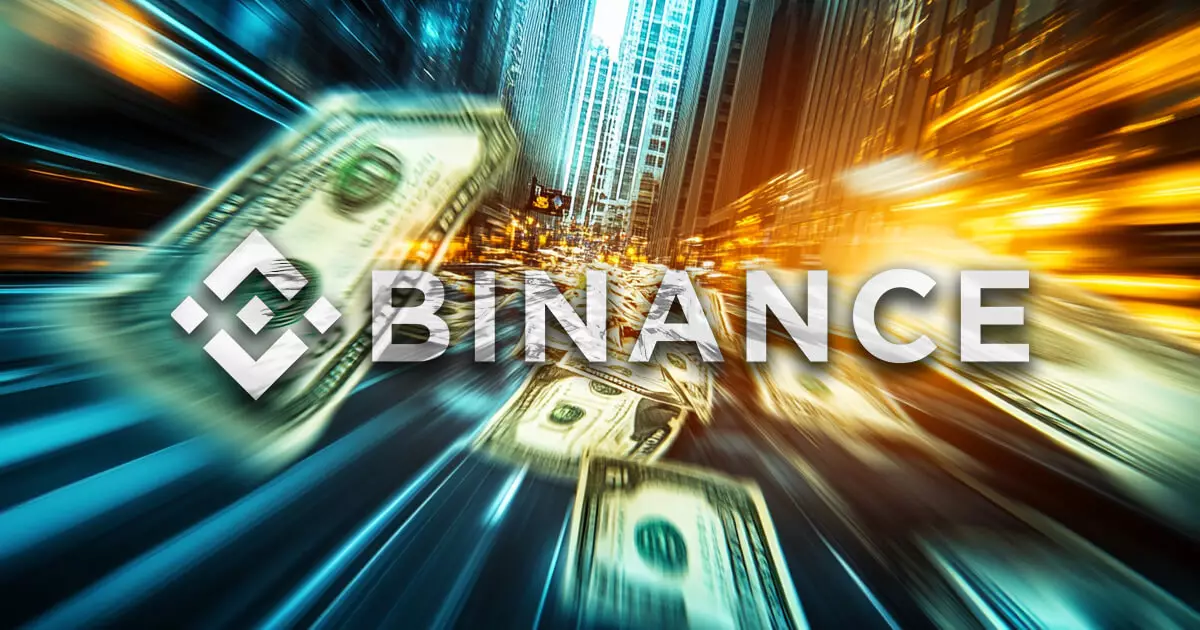In a significant development within the cryptocurrency sphere, Binance has introduced BFUSD, a new yield-bearing stablecoin aimed at empowering futures and perpetual traders. Announced on November 18, this innovative financial instrument offers an impressive annual percentage yield (APY) of approximately 19.55%, creating a unique opportunity for traders looking to optimize their earnings without the typical prerequisites of staking or locking their funds. As cryptocurrencies continue to evolve, Binance’s foray into yield-earning stablecoins could represent a pivotal moment in how traders engage with digital assets.
BFUSD stands out due to its operational structure. Traders can easily acquire this stablecoin through swaps with Tether (USDT), providing a streamlined process for integrating BFUSD into their trading strategies. Furthermore, the stability of BFUSD is reinforced by its collateralization ratio of 105.54%, supported by a reserve fund that held 1.1 million USDT as of November 17. This design suggests a fundamental focus on security and stability, key concerns in a market often plagued by volatility.
However, it is essential to note the geographical limitations imposed on BFUSD. Users from countries where Binance Futures is restricted, like Brazil, are excluded from accessing BFUSD. Additionally, the limitations imposed by the Markets in Crypto-Assets (MiCA) regulation mean that not all users will benefit from the yield opportunities presented by this new stablecoin. Such restrictions might raise questions about Binance’s commitment to providing inclusive financial solutions.
The reward system for holding BFUSD is contingent upon several factors, including a user’s VIP level on Binance, KYC verification, and trading volume thresholds. This structure implies that user engagement and activity directly influence potential earnings, fostering a more active trading environment. The interest calculations are based on the lowest recorded balance of BFUSD during hourly snapshots, with daily distributions to users’ accounts. This granularity in reward distribution could appeal to traders seeking immediate returns on their investments.
In a further attempt to enhance trading flexibility, BFUSD can also be utilized as collateral at a full collateralization ratio of 100% in Multi-Asset Mode. This empowers traders to diversify their portfolios and explore a broader range of trading opportunities—a strategy that could be particularly beneficial in a bull market phase.
The introduction of BFUSD comes at a time of heightened competition in the stablecoin market. With other entities like Ethena offering yields as high as 29% APY and Tether asserting dominance with a staggering 74% market share, Binance finds itself navigating a fraught landscape. Additionally, institutional moves, such as BlackRock’s BUIDL, are redefining collateral options by treating fund shares as stablecoins, further intensifying competition.
Amidst these challenges, Binance’s move into this market segment must also contend with the residual effects of regulatory scrutiny faced in the past. Since the New York Department of Financial Services ordered Paxos to cease issuing Binance USD (BUSD) due to regulatory concerns in February 2023, Binance has taken steps to distance itself from BUSD while re-emphasizing its stablecoin capabilities through BFUSD and exploring the adoption of First Digital’s FDUSD.
As Binance steps back into the stablecoin arena with BFUSD, the implications of this launch are multifaceted. While the potential for earning through BFUSD presents an attractive proposition for traders, the surrounding regulatory environment and market competition raise critical questions about long-term viability. Only time will reveal whether this strategic pivot can bolster Binance’s standing within the crypto ecosystem or invite further scrutiny from regulators wary of the implications of such innovations. As the crypto market continues to oscillate, Binance’s bold maneuver may just redefine the future of yield-bearing stablecoins.



















Leave a Reply